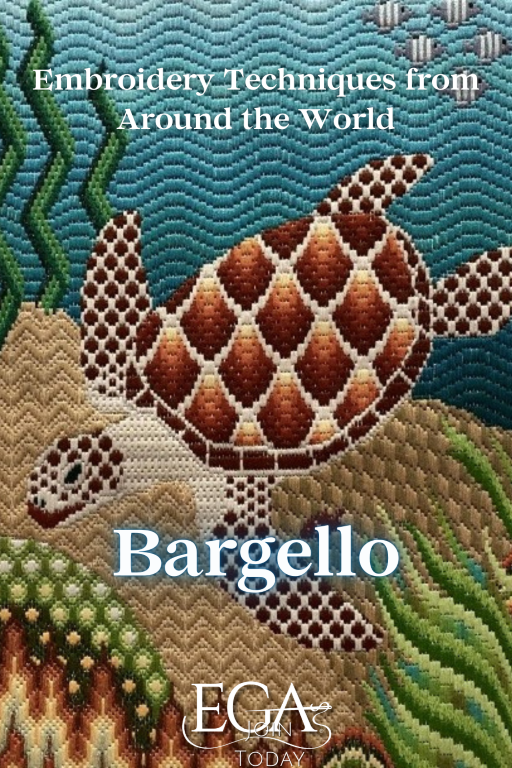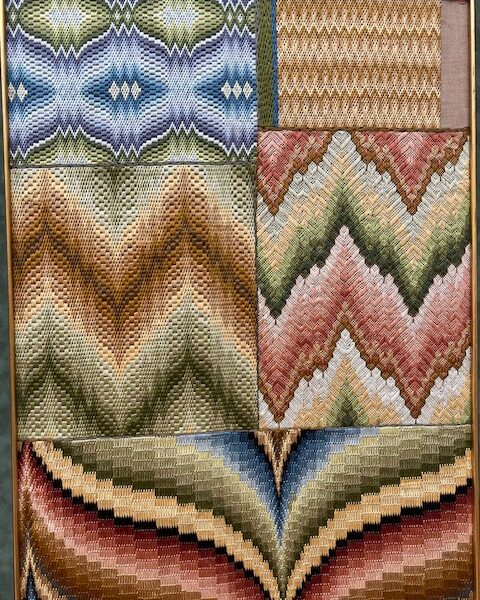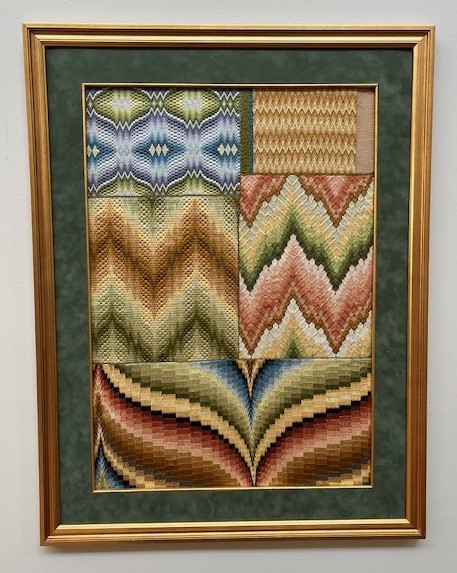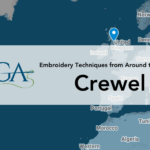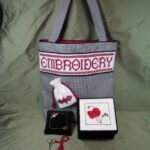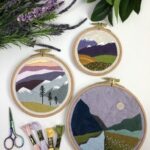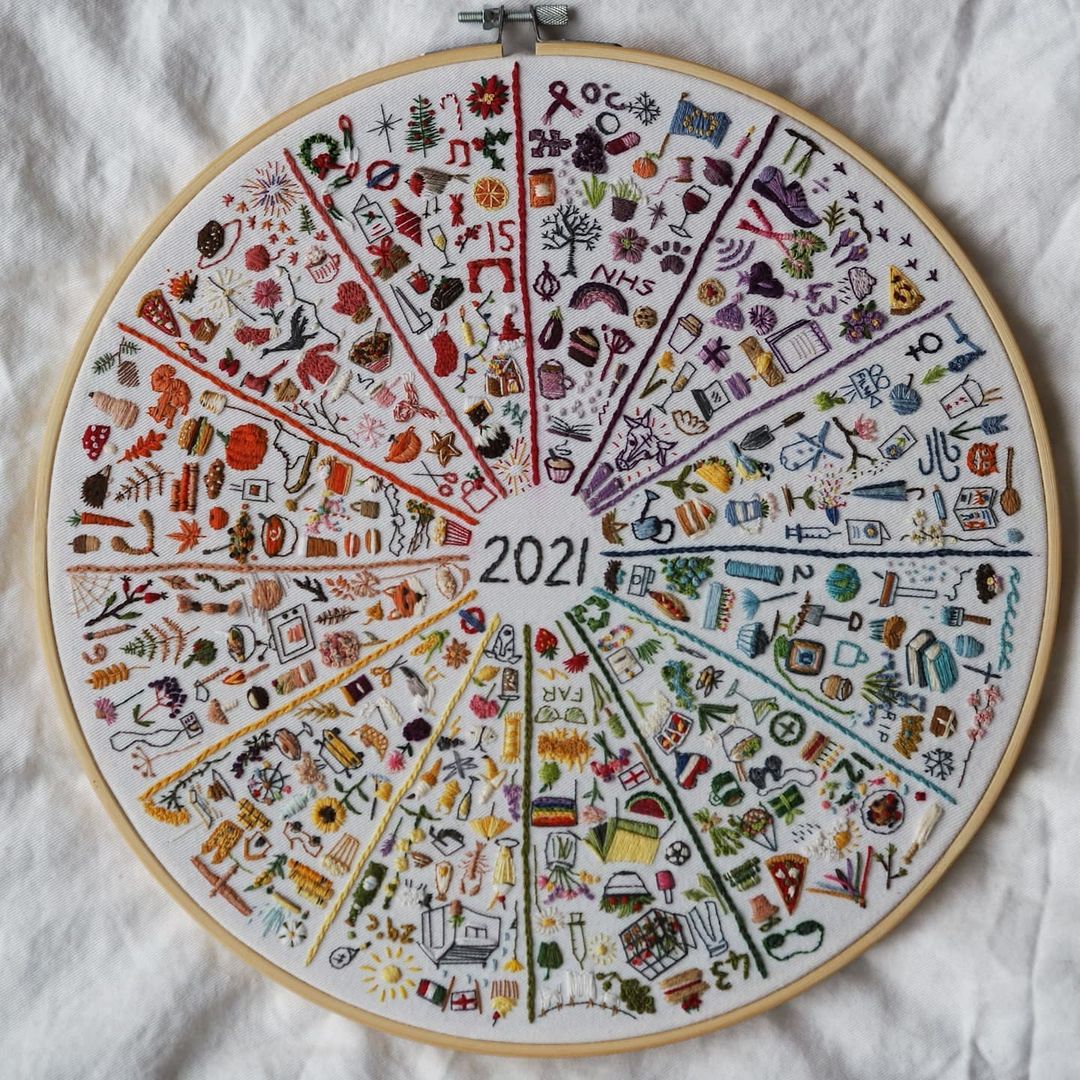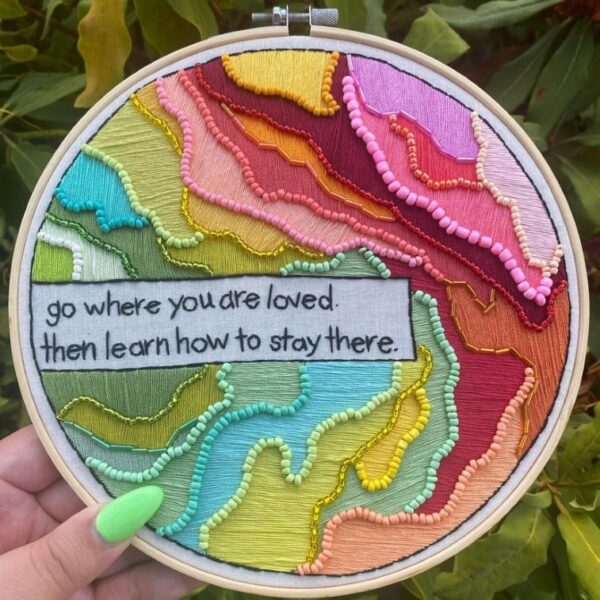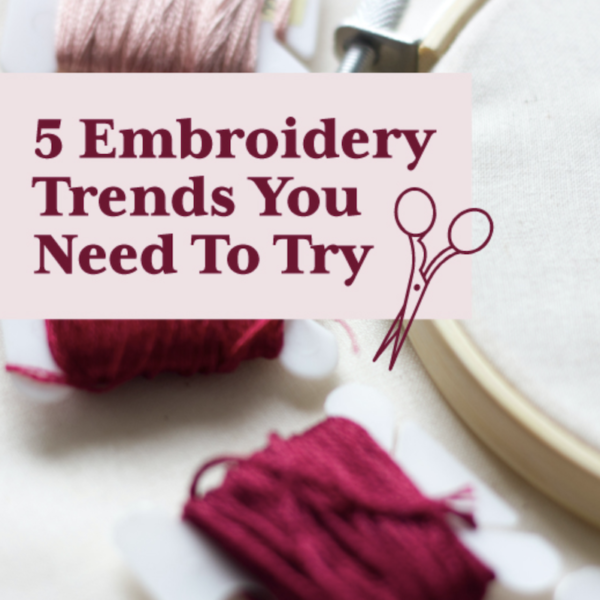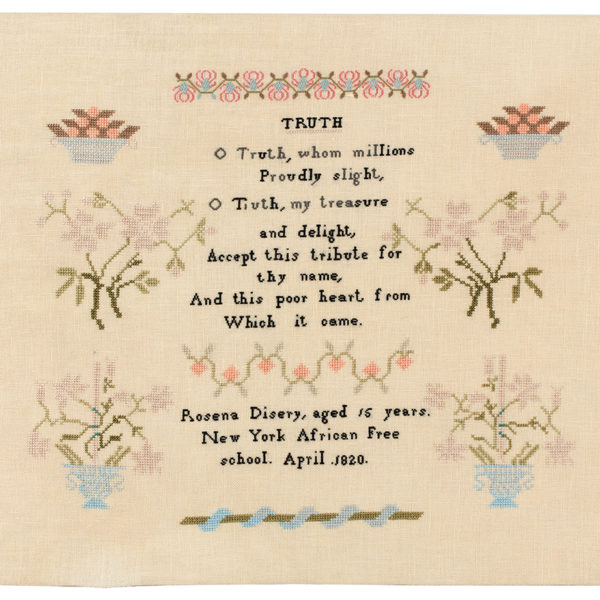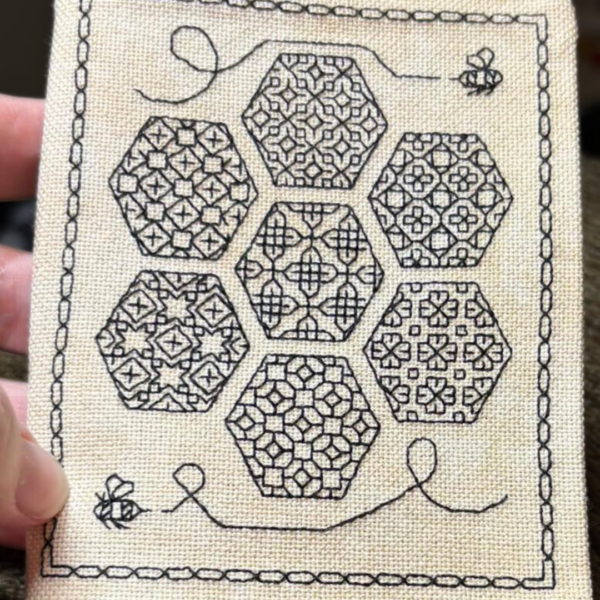Technique: Bargello
Place of Origin: Florence, Italy
Earliest known date: 14th century
History: The earliest known examples of Bargello needlepoint were found in Hungary, Italy, and Great Britain. Bargello is also known by other names: Florentine work, Hungarian point (punto unghero), Flame stitch (punto fiamma), cushion stitch, and Irish stitch.
Bargello’s precise origins are contested among scholars. One of its earliest mentions comes from Hungary, where a noblewoman is said to have created the technique for peasants during a difficult economic period specifically because it helped them embroider intricate designs with less wool. However, its most famous association lies with Italy, particularly Florence.
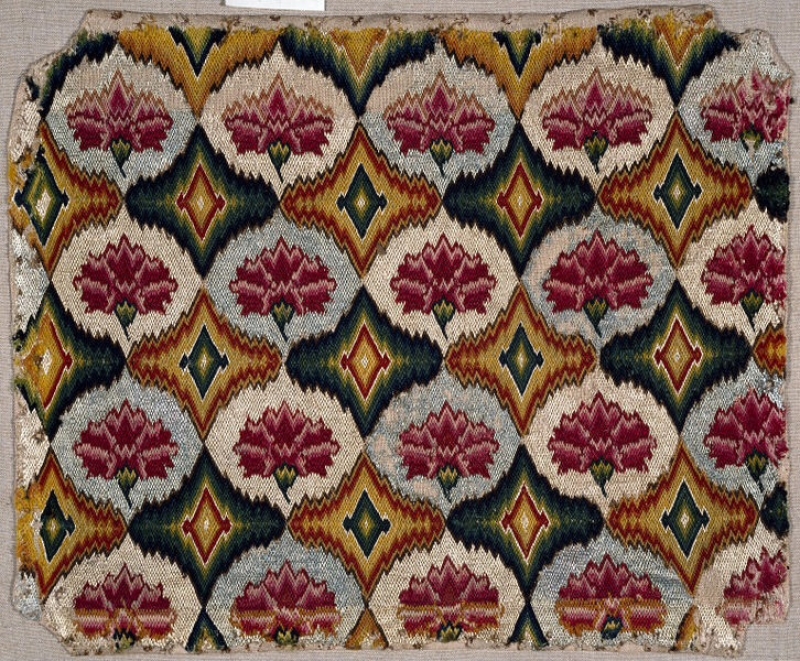
The Museo Nazionale del Bargello in Florence, also known as the Bargello Palace, houses a set of 17th-century chairs upholstered in the characteristic flame stitch. The Bargello Palace was once a prison, and legend says a 14th-century Italian nobleman taught the technique to inmates as a means of rehabilitation. This account is unlikely given most prisoner’s short tenures and the lack of sufficient lighting, but it points to the romanticism around Bargello’s history. This connection with the museum also gives the technique its name in the United States: Bargello.
Bargello experienced a revival in the United States in the 1960s and 70s when its geometric, colorful designs resonated with interior décor trends and fashion aesthetics. Because it is a hardwearing and durable needlepoint technique, it’s especially suited to high-traffic home décor pieces like rugs, cushions, and upholstered furniture, or fashion accessories like shoes and purses.
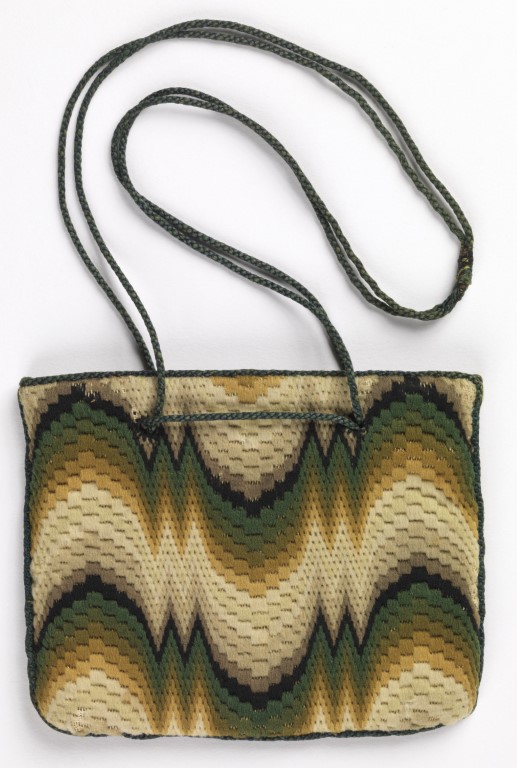
Materials, Techniques, and Stitches: Bargello embroidery has historically been worked with wool yarn on a canvas base. Traditional canvases used for Bargello are often of a coarse weave, such as linen or modern cotton mesh, allowing for the signature upright stitches to be worked easily.
While wool remains a popular choice for many Bargello projects, contemporary stitchers also experiment with cotton and silk threads, adding different textures and finishes. Yarns are typically chosen in ranges of analogous colors to create the intricate shading and depth characteristic of Bargello designs. Depending on the desired effect, metallic threads and variegated yarns can introduce shimmering accents or gradient transitions in the patterns.
Bargello embroidery is primarily defined by its upright stitches, sometimes referred to as Gobelin-type stitches. These vertical stitches are worked in repeated sequences to form geometric motifs, often creating a sense of movement and rhythm. Most traditional Bargello stitches span two or more threads of the canvas, resulting in a textured, layered effect. The height of the stitches can vary, with some patterns incorporating multiple heights for added visual interest.
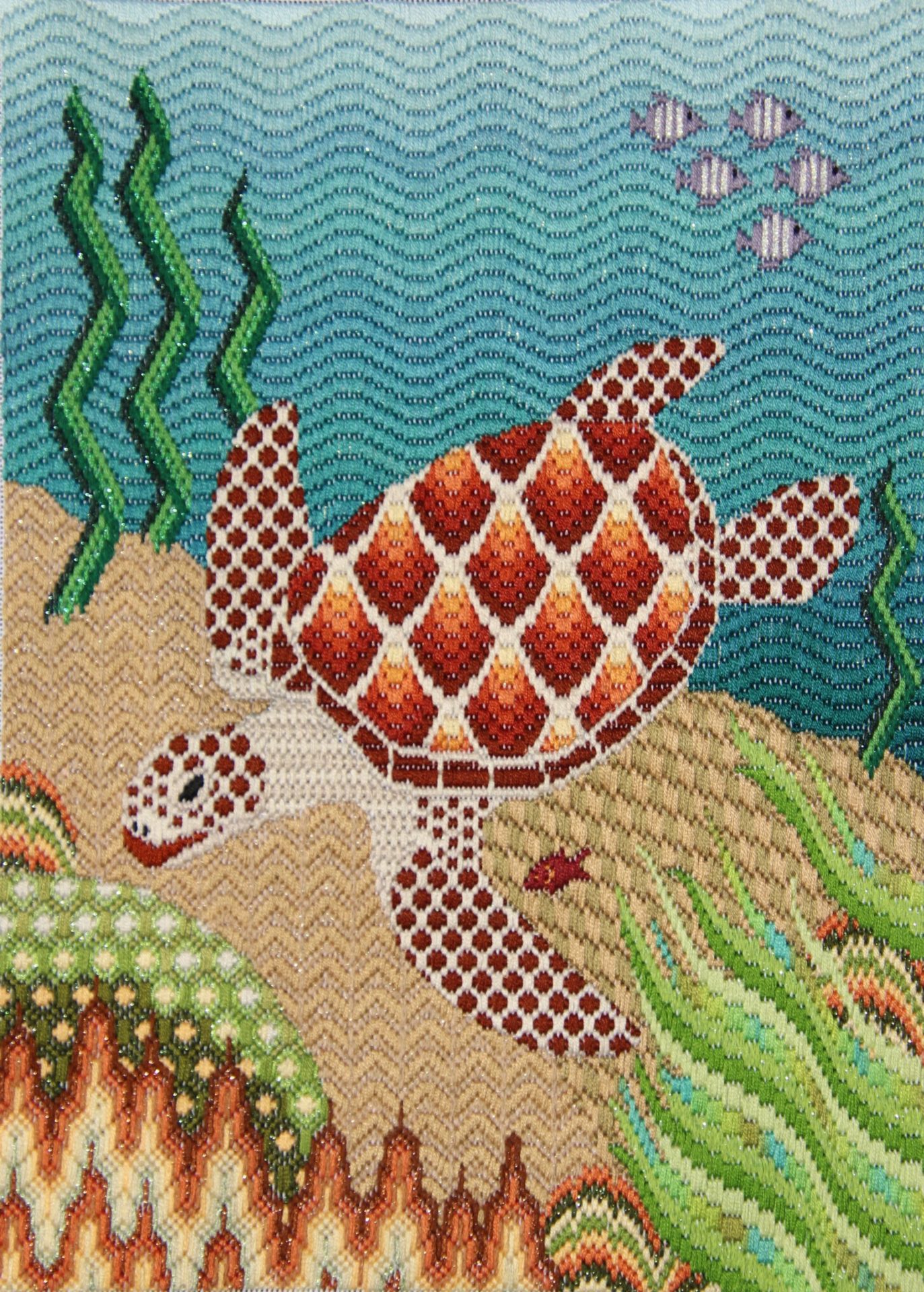
The main technique in Bargello involves repeating vertical stitches in a rhythmic, often mathematical pattern. The stitches are carefully stepped or offset across the canvas, with each step either advancing upward or downward by two threads. This “stepping” creates the signature geometric patterns, giving Bargello its structured, orderly appearance.
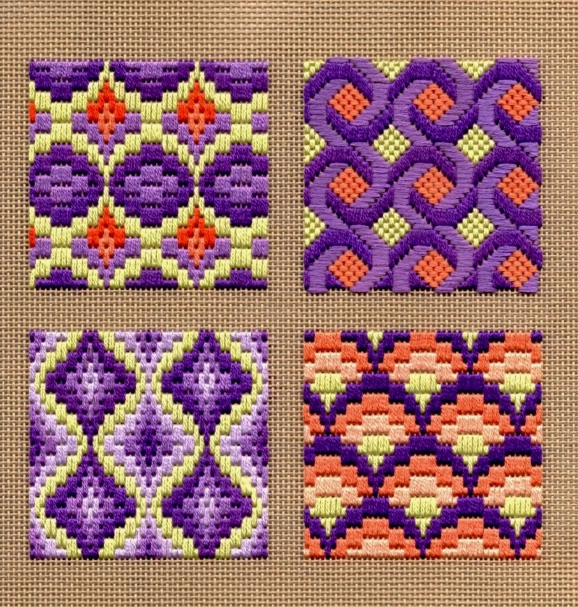
Motifs in Bargello vary widely, but some of the most common include flame stitch, diamond patterns, ribbons, and medallions. Flame stitch, perhaps the most iconic of all, consists of sharp zigzag patterns reminiscent of flickering flames. Diamonds are another sharp-edged motif, where the stepping of stitches creates a repeating diamond shape. In contrast, ribbons and medallions use more gradual stepping, resulting in smooth, curved motifs that add elegance and flow to the overall design.

Each motif relies heavily on color transitions, with hues arranged to create a sense of depth and light. Traditional Bargello tends to stick to geometric forms, but modern adaptations often blend florals or abstract shapes for a contemporary twist.
Bargello (Needlework). (2024, February 18). In Wikipedia. https://en.wikipedia.org/wiki/Bargello_(needlework)
Perry, L. M. (2022, August 8). Back to Bargello. Piecework Magazine. Retrieved September 12, 2024, from https://pieceworkmagazine.com/back-to-bargello/
Minor, H. G. (2020, October 30). Bargello: Cloaked in Legend. Piecework Magazine. Retrieved September 12, 2024, from https://pieceworkmagazine.com/bargello-cloaked-in-legend/
Britannica, T. Editors of Encyclopaedia (2019, October 21). bargello work. Encyclopedia Britannica. https://www.britannica.com/art/bargello-work
(n.d.). Bargello. Textile Research Centre. Retrieved September 12, 2024, from https://trc-leiden.nl/trc-needles/regional-traditions/europe-and-north-america/embroideries/florentine-work
